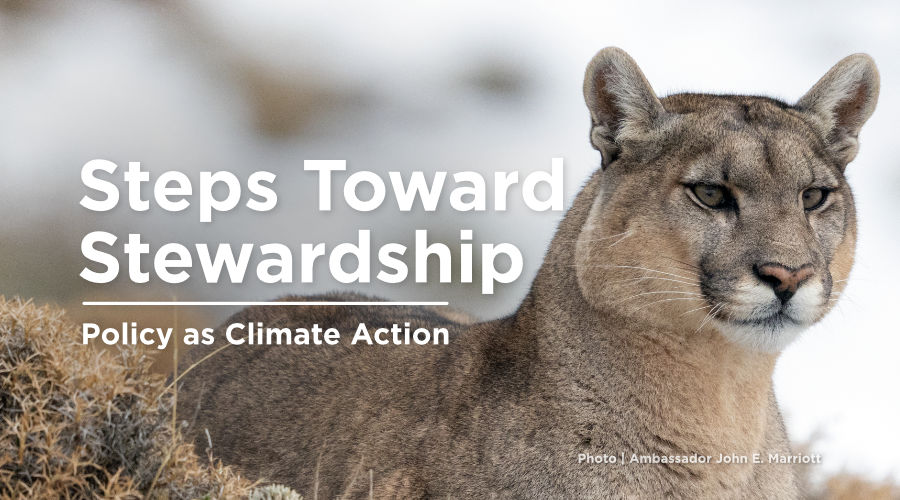
For decades, wildlife management has too often been shaped by special interests that frame predators as threats or commodities. This approach has left ecosystems fragmented, communities divided, and policy influenced more by fear and industry pressure than ecological science.
If we are to address the twin crises of climate change and biodiversity loss, we must move beyond control and look instead to stewardship. Rooted in science, Indigenous leadership, and public trust, stewardship embraces coexistence and offers a viable path forward.
Conservation is not control, nor is it killing one species to "save" another. Yet across Canada, predator culls are still justified as management tools, even when science shows they undermine ecological stability. True conservation requires restraint and humility. It means addressing the root causes of imbalance, such as habitat loss, unsustainable industry practices, and inconsistent governance, rather than scapegoating predators.
Non-lethal coexistence strategies are already proving effective and being successfully implemented across the world. Electric fencing, range riders, carcass removal, and bear-safe waste systems all reduce conflict while preserving predators' ecological role. Coexistence is not just ethical, it is practical and fosters climate resilience at a time when we need it most.
Fear of predators is natural, but it must not form the basis of policy. When fear is politicized, it leads to reactive decisions that can very quickly unravel entire ecosystems. Awareness, education, and transparency are the keys to responsible governance and a shift toward successful stewardship.
As Dr. Sheanna Steingass of Oregon State University reminds us: “Out of the triangle of humans, livestock, and wildlife, we’re the only ones who can change our behaviour.”
The latest Living Planet Report Canada from WWF makes clear that climate change and biodiversity loss are inseparable. Halting one requires addressing the other.
Canada’s 2030 Nature Strategy commits the country to halting and reversing biodiversity loss as part of the Kunming-Montreal Global Biodiversity Framework. With the second-largest share of intact wilderness on Earth, Canada has an outsized responsibility to succeed. The strategy stresses that biodiversity protection is not separate from economic security or climate resilience: we know that we need healthy ecosystems. So why is there so much disparity between awareness and action?
Key commitments from Canada include conserving 30 percent of lands and waters by 2030, advancing Indigenous-led conservation, restoring degraded ecosystems, and embedding biodiversity values into economic decisions. Yet, we still see policy that degrades the environment and stands in opposition to the commitments made, such as the recently intoduced Bill C-5, that removes federal safeguards for at-risk species.
___
The federal government acknowledges that “ despite all the good work underway, we have yet to turn the tide on biodiversity loss. To do that we will need to address several key challenges that have, to date, hampered our best efforts. These include:
Government coordination and policy coherence– There is an increased need to coordinate across the many government departments and agencies that must be involved in biodiversity conservation, as well as a need to coordinate across all levels of government (e.g., federal, provincial, territorial, municipal, Indigenous).”
____
Recent policy changes in Alberta reveal the risks of ignoring science and public accountability. In 2024 and 2025, the provincial government introduced sweeping changes to hunting regulation without sufficient or transparent public consultation. These included legalizing the hounding of cougars and bears, lowering the hunting age, expanding baiting allowances, and removing mandatory harvest reporting. Such moves weaken science-based management and undermine trust in governance while exposing predators to heightened pressure at a time of ecological instability.
In British Columbia, proposed developments have threatened critical wildlife corridors in the Kootenays and Selkirks, where species like grizzly bears, wolverines, and caribou rely on intact habitat to survive. Projects such as the Zincton ski resort have faced strong opposition from conservation groups and Indigenous Nations, who stress that habitat fragmentation in these core areas places long-term biodiversity at risk. At the same time, BC continues to authorize the logging of vital old-growth forests, vast carbon sinks that are relied upon by predator-prey species alike.
Both provinces show how policy choices can either dismantle or strengthen resilience. Protecting habitat and reforming governance is climate action. Weakening safeguards in the face of mounting ecological stress will only accelerate loss.
Wildlife governance in Canada must reflect the public trust. Polling consistently shows that Canadians support stronger environmental protections, Indigenous leadership, and science-based conservation. The 2030 Nature Strategy also underscores that biodiversity loss directly threatens the rights of Indigenous Peoples to hunt, fish, harvest, and practice cultural traditions. Failing to protect biodiversity is therefore not only an ecological failure but a breach of legal and moral responsibility.
This disconnect between commitments and actions erodes confidence and places long-term ecological and economic security at risk. Canadians deserve transparent, accountable processes where decisions about wildlife reflect public values and future generations.
To achieve the 2030 vision, Canada must go beyond incremental progress. The Strategy itself recognizes that transformative change is needed. That means rethinking the paradigms and financing models that created the crisis, and embedding biodiversity into every sector of decision-making.
Stronger coordination across governments, deeper partnerships with Indigenous Peoples, and continued collaboration with industry and environmental organizations are essential. The 2030 Nature Strategy is a foundation, but success will require political courage and public accountability.
Across the world, nations are proving that coexistence and conservation can go hand in hand with thriving economies. Canada should be among them.
We are calling on provincial governments to prioritize coexistence measures, reform outdated predator policies, and fully implement the commitments of the 2030 Nature Strategy. And we call on communities to raise your voices, knowing that public pressure can shift the political balance.
Through collective action, we can safeguard apex predators and ensure a climate-resilient future.
Exposed Wildlife Conservancy will continue to serve as a voice for apex predators. Join us in advocating for a future where stewardship defines our relationship with the wild and coexistence replaces control.